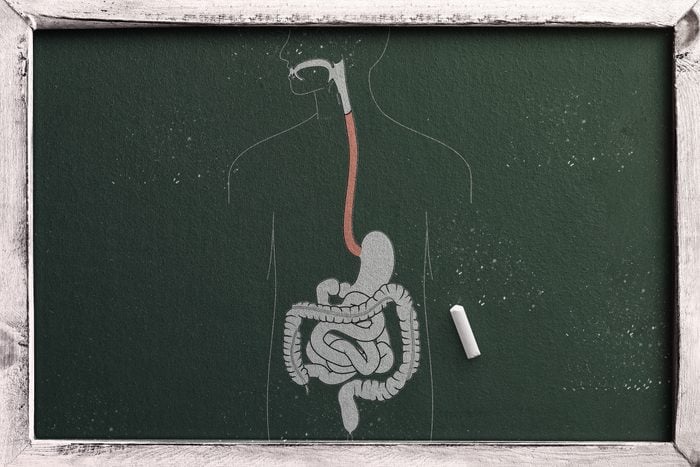
No doubt, inflammation is a hot topic. It seems no matter where you turn within the health and wellness arena, inflammation has a seat at the table. Driven primarily from an increased understanding of the role that inflammation plays in the onset and progression of a number of diseases like Alzheimer’s and cancer, countless studies are now aimed at identifying the primary risk factors and causes of inflammation. One of the predominant areas of those studies has been in the area of gut inflammation.
One such study presented at the May 2023 Digestive Disease Week conference (which is hosted by several national medical societies) identified a number of risk factors that have played a contributing role in the increasing number of pediatric inflammatory bowel disease (IBD) cases. The three main risk factors include early exposure to antibiotics, a Western diet, and a higher socioeconomic status. As identified risk factors tied primarily to the pediatric population, we got curious: Can this study indicate any crossover to gastrointestinal conditions among adults?
With the help of Dr. Simon Mathews, MD, assistant professor of medicine at Johns Hopkins University and practicing gastroenterologist, we set out to identify the worst causes of gut inflammation in the adult population and the importance of an awareness of these causes. As Dr. Mathews stated: “For better or worse, the GI tract goes from top to bottom and anything in-between can be impacted from inflammation.”
Gut Inflammation Could Lead to This Nerve-Degenerative Disease, Says New Study

1. Infection
As one might already assume, infection (gastroenteritis) can be a major contributor to gut inflammation. Stemming from both viral and bacterial causes, infection can present itself through a number of common symptoms like nausea, vomiting, and diarrhea, each of which may help us to identify where the infection may be occurring. “Depending on your symptoms, it can help you to localize,” says Dr. Mathews. “The presence of upper symptoms like nausea or vomiting, means it is likely higher up in your GI tract, as opposed to diarrhea, which is going to be lower.”
In terms of prevention, there are a number of precautions you can take to minimize your chances of GI infection. Simple things like proper hand-washing and carefully washing your produce can minimize the transfer of viral infections, and proper food-handling can minimize the risk of bacterial gastroenteritis, more commonly referred to as food poisoning.

2. Autoimmune conditions
Autoimmune diseases are complicated. As defined by Johns Hopkins Medicine, “Autoimmune disease happens when the body’s natural defense system can’t tell the difference between your own cells and foreign cells, causing the body to mistakenly attack normal cells.” In terms of the GI tract, there are a few notable autoimmune causes for gut inflammation that Dr. Mathews identified.
Inflammatory bowel disease (IBD), as referenced in the pediatric study, is a term used for two autoimmune conditions, which are Crohn’s disease and ulcerative colitis. According to Dr. Mathews, “The mystery of how [IBD] starts, and the exact mechanism for why someone gets IBD is not known.” What has been identified are associated risk factors. In the case of pediatrics, as the study identified, early antibiotic exposure, consuming the typical Western Diet, and a higher socioeconomic status were all risk factors. Smoking, a fatty diet, and antibiotics were adult risk factors Dr. Mathews narrowed down further for grownups.
Also falling under the umbrella of autoimmune conditions are genetic causes such as celiac disease, which is associated with the ingestion of gluten in people who have it. In this case, Dr. Mathews pointed out that symptoms are often “ignored or tolerated,” as opposed to the symptoms associated with IBD, which can often present as pain and discomfort.

3. Food allergies
Many people are familiar with how exposure to known allergens can manifest in inflammation to visible parts of the body like the skin or eyes…think hives or itchy red eyes.
Similar to these inflammatory responses, the gut can react to the ingestion of allergens in our food. Common symptoms can include abdominal cramps, nausea, vomiting, and diarrhea, all of which are important to take note of. Experiencing these symptoms following food ingestion could warrant further exploration with your physician and prevention of inflammation involves steering clear of any of your known allergens.

4. Medications
Both over the counter medications and new prescription drugs can be big contributors to inflammation. “Things that are super common like NSAIDs (Ibuprofen, Advil, Motrin) can cause injury and inflammation,” shared Dr. Mathews, along with others like “more specialized drugs such as chemo-therapies or immune check point inhibitor therapies, which are for cancer and can cause side effects that we see in the GI tract involving inflammation.” He added that “side effects for drugs are very common, but people are not often linking symptoms and the new medications.” He advised that people pay attention to their bodies with the introduction of any new medications.

5. Diet
“A poor diet high in processed and fatty foods (fried foods) can cause a disruption in the natural balance of your GI tract and your GI microbiome, which is the constellation of bacteria and viruses that in most cases, live harmoniously within everybody,” said Dr. Mathews. When the microbiome “is skewed off-balance, it can ultimately lead to more permeability in the lining of the GI tract, which can then lead to bugs getting in that are not supposed to get in.”
Dr. Mathews emphasized that this was a more general cause of inflammation and that most people “aren’t likely to be hospitalized for inflammation that is caused by poor diet. It’s likely to be a low level chronic inflammation that can contribute to changes at the micro level and aren’t likely driving symptoms,” such as those associated with some of the other previously named causes.
The Healthy @Reader’s Digest’s Medical Review Board co-chair Latoya Julce adds you should be wary of caffeine if you have inflammation. “Regardless of your predisposition to caffeine, it can spike cortisol levels,” she explains. “Cortisol is anti-inflammatory by nature, but prolonged levels can have the opposite effect, contributing to chronic inflammation.”

The takeaway
Causes of gut inflammation can be many, only some of which are within in our control. A final thought from Dr. Mathews is that “there are all of these different paths to gut inflammation. It is not a single direct arrow. It’s arrows coming from every place, like environment, genetics, food, and medicines. There are a lot of variables that interact, and we are just beginning to understand the role and impact that these individual variables play, and how they work together to cause these states of disease.” The important thing is to pay attention to your body, eat a balanced diet, and work closely with your physician if you are showing any symptoms of GI inflammation.
Get The Healthy @Reader’s Digest newsletter and follow The Healthy on Facebook, Instagram, and Twitter. Keep reading:

